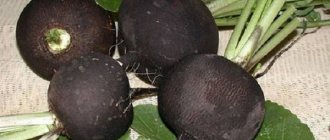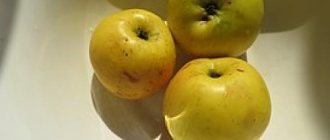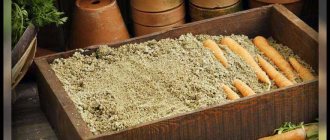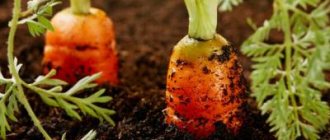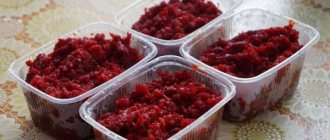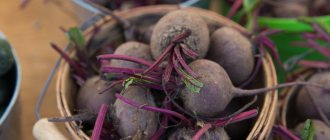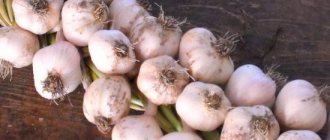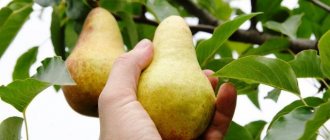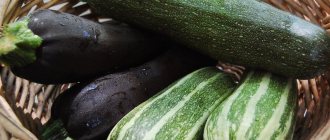The harvested carrots and beets can be preserved not only until the winter cold, but also until next autumn. A cellar is ideal for overwintering vegetables.
There are several ways to store root vegetables. Subject to certain rules, agricultural products can be stored both together and separately.
Let's take a closer look at how to properly store carrots and beets for the winter in a cellar, underground or basement.
Can it be stored together?
Orange and burgundy root crops have similar requirements for winter storage. They have the same required level of temperature and humidity. Harvesting of these crops also occurs at the same time.
Both varieties of vegetables winter well in:
- sand,
- sawdust,
- clay,
- onion peel,
- peat
This allows you to leave carrots and beets in the same cellar until spring, even in the same container.
Despite such similar characteristics, root vegetables have some differences. Beets are considered a more shelf-stable crop, carrots – more capricious.
That is why ideally these vegetables are kept separately . If this is not possible, then placing them in one box, it is necessary to separate the cultures with a layer of filler.
It is not recommended to place carrots and beets close to each other. At the same time, being together in the same cellar does not affect the quality of both vegetables.
How to preserve carrots and beets for the winter
Root crops grown in household plots are traditionally used not only in the summer, but also stored.
This is facilitated by the unpretentiousness of crops and their productivity. The easiest way to preserve carrots and beets for the winter is to use piles, basements and cellars. Under conditions of low temperature, root crops enter a period of rest, the growth of tops stops or slows down, and the need for moisture and nutrients disappears.
But no matter how picky the culture may be, over months of storage beets and carrots inevitably lose moisture and can be subject to rot and infection with mold fungi. And an increase in temperature in the storage area activates growth processes. In addition, not all root vegetables store equally well. Their ability to retain moisture and resist spoilage is influenced by both the timing of harvest and the initial quality of the crop. How to properly store beets and carrots? Which root crops can withstand many months in a pile or basement, and what should we do with the rest of the harvest?
Preparation for storage in the underground or basement
After digging out of the ground, root crops must be fully prepared for underground storage. Ignoring this stage is fraught with rapid spoilage of plant products.
The preparatory process consists of successive steps:
- The dug up vegetables are dried in the fresh air in the shade.
- Remove dirt from the surface with a dry mitten or rag.
- Root vegetables are calibrated, removing damaged and diseased ones.
- Cut the tops of carrots and beets to a height of 5-10 mm.
- The cut is powdered with chalk powder or ash.
To extend shelf life, it is useful to dust root vegetables with chalk before placing them in containers. For 10 kg of product, 200 grams of chalk powder is enough.
Read about how to prepare carrots for long-term storage here.
Suitable varieties
Late-ripening varieties of root crops should be selected for storage . The following varieties and hybrids of carrots are best stored:
Gribovchanin F1.- Nantes 4.
- Incomparable.
- Nevis F1.
- Samson.
- Chance.
- Moscow winter.
- Incomparable.
Beet varieties suitable for long-term storage:
- Bravo.
- Incomparable.
- Bordeaux 237.
- Red ball.
- Podzimnyaya.
- Mulatto.
- Detroit.
- Nosovskaya flat.
There are no definite recommendations on how best to store it at home and where, in the basement or underground (underground), everyone decides for themselves experimentally. The determining factors for further preservation are:
- choice of root crop variety;
- preparation technology;
- room temperature;
- humidity mode;
- lack of excess oxygen supply;
- pest protection.
How correctly, under what conditions?
Regardless of the method of planting the crop, it is necessary to adhere to some general rules. The air temperature should remain stable throughout the months.
Its range can vary within a narrow limit: from 0 to +4 degrees. Lower temperatures cause vegetables to freeze, while higher temperatures cause them to sprout.
In both cases, the product spoils. In addition, the cellar is made ventilated and darkened. The air humidity in the room where the root vegetables are stored should be 85-95%.
In the sawdust
Sawdust and wood shavings are suitable for storing carrots
- ate,
- pine trees,
- fir trees
This material perfectly regulates humidity and serves as a thermal insulation layer.
In addition, coniferous wood is a source of phytoncides - compounds that inhibit the development of pathogenic microflora.
A layer of sawdust 2-3 cm thick is poured into the prepared containers. The vegetables are placed vertically on a loose “cushion” with the wide end down, close to each other. Sprinkle wood filler on top so that it covers the tops of the carrots.
In sand
Sand filler is disinfected by heating over an open fire or in the oven . Another method of disinfection is soaking the sand with a strong solution of potassium permanganate. But after this procedure, the substrate should dry well.
To prevent the products from rotting, chalk is added to the sand. A layer of sand is poured into the boxes and one type of root crop is placed. Cover the vegetables with filler so that they are not visible.
Place a second row of carrots or beets. Covered with sand again. For beets, the sand is slightly moistened.
Containers are placed on racks or the floor . In the latter case, the boxes should stand on a grid or stand. In sand in cellar conditions, vegetables retain their quality for up to 6-8 months.
In onion skins
Dry onion wrapping absorbs excess moisture and protects agricultural products from fungal contamination. The husks are poured into a box or bag.
Root vegetables are placed in such a way that each specimen is surrounded by filler. The containers are covered with a lid, and the bags are tied with a rope and sent to the cellar.
In the ground
High-moor peat is used as an earthen filler . It should be a loose, slightly decomposed substrate. It is dried and the humidity level is adjusted to 40-50%.
A layer of earth is poured into wooden boxes or cardboard boxes and vegetables are laid on it. Sprinkle with peat and repeat the laying. The top layer must be made of peat.
Several more ways to store carrots in the ground are discussed in this article.
In a plastic bag
Large bags made of polypropylene or polyethylene are suitable for storage. Vegetables are placed in bags, then sealed or tied tightly.
Polypropylene bags are semi-permeable, so they allow air to pass through . Plastic bags do not have this feature, so they are pierced with a thick needle in several places.
The bags are placed on prepared racks or hung on a hook in the cellar. You can find out how to store carrots in bags here.
In clay
Before planting root crops, it is necessary to prepare a clay substrate . To do this, it is moistened with water for several days. Clay saturated with moisture acquires a creamy consistency.
The wooden box is lined with film or polyethylene. If an enamel or plastic container is used for storage, a waterproof layer is not needed.
Next, the root vegetables are placed in a container in one layer and filled with mash . After the clay “sets” slightly, lay out a layer of carrots or beets again and pour over the clay filler.
Depending on the volume, from two to four vegetable layers are placed in the container.
Carrot storage
Having harvested a good harvest or simply made a large stock, the consumer wonders how best to store carrots in the winter so that they do not lose their presentation and taste. Experienced vegetable growers have formulated several ways to properly store carrots in winter.
Method one
You will need loamy sand, which must be dry. This option can be used for storing carrots in winter in basements, pits, and cellars with low temperatures. Sand, forming a breathable cushion, copes with the fumes released by vegetables and the development of harmful microorganisms.
Sand is poured into the box in layers. It must be moistened with water. With this storage method, the carrots should not touch each other. Layer height – no more than 4 cm.
Possible problems and solutions
During storage, problems may arise that affect the quality and shelf life of products. The most important ones are related to changes in temperature, humidity, and the appearance of fungus.
Every problem has its own solutions.
Change in temperature .
If the cellar is poorly insulated during the winter months, the temperature may drop or rise. If the thermometer shows a critical level below zero degrees, a bucket of smoldering coals can help out. When the temperature rises, the cellar should be ventilated.- Change in humidity . This indicator can be adjusted using salt and charcoal. Moisture-absorbing filler is poured into boxes and placed in the corners of the room.
- The appearance of mold . Lime is used to disinfect the cellar. It kills pathogenic fungi and dries the air at the same time.
To reduce fungal infection of root crops, it is useful to use plants that secrete phytoncides. To do this, carrots and beets are arranged with sprigs of fern, rowan, and tansy.
Harvesting methods
Someone pulls root crops out of the ground, someone digs with a pitchfork, someone takes up a shovel. How to do it right? Do not water the vegetable bed before harvesting .
It is best to dig with a blunt pitchfork, supporting the root crop by the tail. The forks must be placed strictly vertically no closer than 5 cm from the row. This will help avoid microtraumas, because the key to good storage is intact skin. Therefore, hitting root vegetables against each other to shake off the soil is also not recommended.
It is better to remove excess soil from root crops with gloved hands . Then you need to trim the tops, cut them, not break them off, leave a tail of 1-1.5 cm, and leave to dry for several hours. Tops should be trimmed immediately as this will preserve nutrients. Then sort the fruits, remove damaged and spoiled roots to avoid rot.
Some vegetable growers recommend this method of cutting carrot tops - cutting off 0.5–1 cm of the top of the root crop itself. If you use this method, you should keep the vegetables for some time before storing them in the storage place - until the top cut is covered with a crust, otherwise the fruits will begin to rot soon. In rainy weather, drying in the shed may take several days, even a week.
Root crops must not be washed before storing ! Washed beets and carrots can be stored in the vegetable compartment of the refrigerator in a plastic bag for one month.
Tips and prohibitions
To prevent the harvest from spoiling, it is necessary to take into account some nuances . They relate to harvesting, creating conditions in the cellar, and proper preparation of storage and vegetables.
Before storing the products, the cellar must be prepared. To do this, it is ventilated, dried, and treated with fungicidal preparations.
Experts recommend storing mid- and late-ripening varieties for long-term storage:
| Variety/Vegetable | Carrot | Beet |
| Late ripening | Queen of Autumn, Red Giant, Vita Longa, Emperor | Renova, Gribovskaya, Incomparable, Egyptian flat |
| Mid-season | Nantskaya-4, Samson, Nectar F1, Moscow winter | Bohemia, Top Hat, Opolskaya, Patrick |
Another factor that affects the safety of vegetables is the harvest time. It is most optimal to dig up root crops in late September - early October.
A guideline for a successful harvest period can be 2-3 yellowed lower leaves in the tops. Be sure to choose a dry day for cleaning.
There are several taboos that are worth remembering when planting and storing carrots and beets underground. In particular, it is strictly not recommended:
Harvest in rainy weather.- Wash vegetables before placing in containers.
- Place undried root vegetables.
- Leave rotten specimens in the cellar.
- Keep the storage temperature above +5 degrees.
- Keep root vegetables and apples in the same room.
How to properly store beets and carrots?
Beets are less demanding on storage conditions than carrots. Therefore, if there is ventilation in the basement or cellar, a temperature within 2–6 °C and a humidity of 85–95%, burgundy root vegetables are perfectly stored along with potatoes in piles, boxes or containers:
- However, beets, like carrots, can be stored for the winter in containers where the vegetables are sprinkled with sand in layers. To avoid the development of pathogenic flora, up to 2% chalk or slaked lime is mixed into the sand.
- At home, layers of beets and carrots intended for storage can be laid with thick paper or corrugated cardboard.
- Fresh sawdust, phytoncides and essential oils of which inhibit parasites and pathogens of putrefactive processes, are good at resisting the drying out of carrots and beets, as well as the proliferation of bacteria and fungi.
Root vegetables that are pre-treated with a porridge-like mixture of clay mixed with water are stored well. After immersion in such a product, carrots and beets are removed, dried and stored in the basement, and thanks to the moisture-retaining clay layer, the crop is guaranteed to be protected from withering and spoilage. How to properly store beets and carrots if it is not possible to use sand and clay? In refrigerated storage, carrots and beets can be kept fresh in thick plastic bags with a capacity of 20 to 50 kg. The bags filled with vegetables are not tied, but placed vertically on racks.
As a result of the respiration of root crops, high humidity and a concentration of 2–3% carbon dioxide are formed inside the containers. Moreover, at temperatures close to zero and high humidity, no signs of rotting or mold development are noticed.
It has been noticed that small and ugly root vegetables lose moisture 10–20% more during storage than selected carrots and beets. But what to do if ideal vegetables do not always grow in the garden beds? How to preserve such carrots and beets for the winter? There is no point in throwing away the harvest, because even the least beautiful and largest specimens can be beneficial and end up on the table in the form of homemade preparations. Beets and carrots can be frozen for the winter, and in several original ways. Root vegetables dry well. These vegetables are salted, pickled and fermented; sweet root vegetables make delicious jam, juices and candied fruits.
